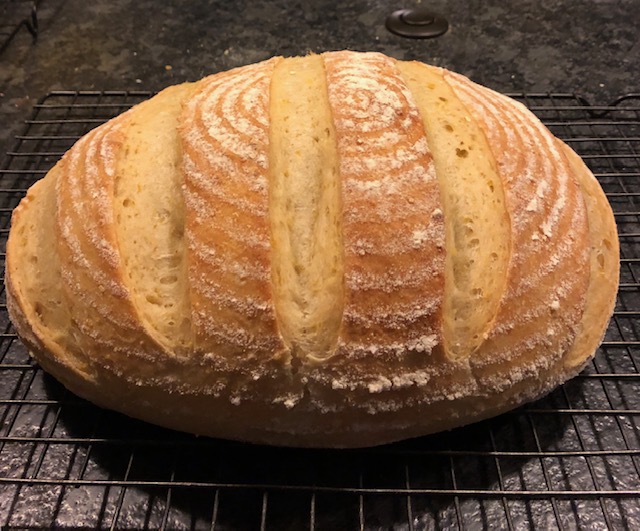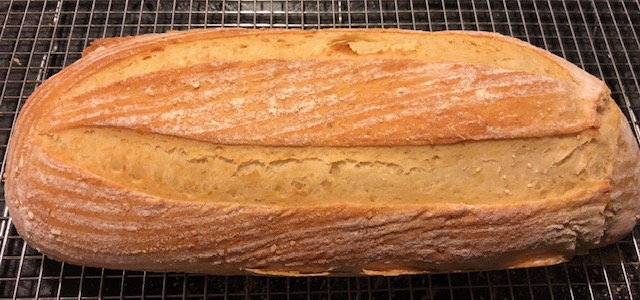Does anyone make polenta bread? When I lived in Eugene, Oregon, in the 1990s (and long before I immersed myself in artisan bread making), Chuck Koehler opened his Eugene City Bakery around the corner from my house. (Chuck sold the baker in 2008 and a few years ago the new owners closed it.) Anyway, one of the amazing breads Chuck made was a polenta boule. In one of our conversations he told me that Joe Ortiz’s book “The Village Baker” would change the way I look at bread. Last year I finally bought a copy, and lo and behold Ortiz has a recipe for polenta bread. (It’s a straight yeast bread.). Using his recipe as a starting point, I started experimenting, and it has become a regular in my bread rotation. Now I guess I will try changing it into a sourdough!
Looks delicious!
When i do oat porridge breads, i cook oatmeal to eat, and then use leftovers in a dough – 30-50% of flour weight. Is that what you do with the polenta or is it dry?
I cook the polenta (Bob’s Red Mill cooked per package instructions), spread it out on parchment paper, let cool and then loosen it by hand in the starter water, using equal amounts of flour and cooked polenta. That said, I have found it necessary to add more water than Ortiz calls for to get what he describes as a “very wet batter.” When I make the dough later, I add enough AP flour until the dough feels right to my hands. I have written down gram weights several times but it’s different each time! I think the moisture in the polenta has varied - by how long I cooked it, how long I let it dry, etc. I bake loaves in a covered cloche for 15 min., then remove the lid after 15 min. and complete cooking, always checking final temp. The crumb is very soft and tasty and even in a covered cloche the crust does not get very hard. The bread gets high marks from tasters.
Cool - thanks for explaining! I can relate to the hydration situation, especially since i also don’t measure when i make the oatmeal lol



